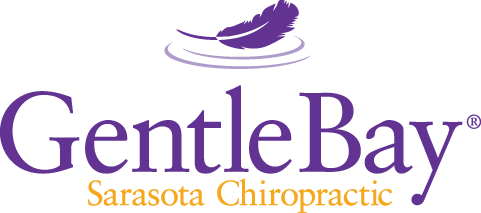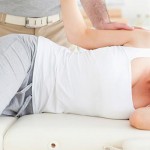By Dr. Eric Winder (as published in the January 2017 issue of Natural Awakenings, Sarasota/Manatee/Charlotte edition)
 Sam has spinal stenosis. Karen was diagnosed with bulged discs. Martin’s orthopedist informed him that his back is “full of arthritis.” All these individuals had x-rays or MRIs showing these problems. If we took new images again today, their spines would look the same––stenosis, bulges and arthritis. But they’ve all experienced tremendous pain relief without drugs, surgery or forceful manipulation. The common key for these three people is the successful treatment of fascia, or fibrous connective tissue.
Sam has spinal stenosis. Karen was diagnosed with bulged discs. Martin’s orthopedist informed him that his back is “full of arthritis.” All these individuals had x-rays or MRIs showing these problems. If we took new images again today, their spines would look the same––stenosis, bulges and arthritis. But they’ve all experienced tremendous pain relief without drugs, surgery or forceful manipulation. The common key for these three people is the successful treatment of fascia, or fibrous connective tissue.
Fascia is Connective Tissue
Muscular fascia is called the “myofascia,” and various massage or manual treatment techniques aim to help this tissue. In addition, fascia supports and protects several other tissues in the body. Fascia covers bones and joints, wraps each organ in a protective tunic, and gives strength to nerves and arteries. Tendons, ligaments and discs are also considered fascia. A tough fascia called the meninges protects the brain and spinal cord. In addition, fascia from all these different areas interconnects like a complicated web.
A Sixth Sense
Fascia makes up the structural support fabric of our bodies, and it does something else importanttoo. Just like our eyes take in light and send pictures to our brain, fascia also gathers information and sends a picture. Like the special nerves in the retina that sense light, there are special nerve endings in fascia that sense stretch and pressure––millions of them. These nerves sense posture and motion, then paint a picture for your brain of where all the body parts exist in space.
Can you close your eyes and then touch your finger to your nose? Thank your fascia for sending the signals of position sense, or proprioception. Without proprioception, you couldn’t walk, talk or get out of bed each morning. This makes proprioception just as important as sight and hearing. And when this position sense becomes impaired, pain can result.
Fascia and Pain
Fascia often becomes stiff, restricted and irritated from changes caused by injury, impact, repetitive stress and chronic tension. This can alter the quality of nerve input for position sense which affects muscle tension and joint alignment or stability. In other words, “dings and dents” in the fascia cause muscle and joint issues. From minor complaints to severe disabling pain, I find most problems with chronic spine pain involve serious problems with restrictions in the fascia.
Therefore, Sam’s spinal stenosis resulted from instability caused by confused position sense, resulting from fascia stiffened by a car accident. Karen’s discs bulged because scar tissue from a surgery distorted her abdominal fascia and weakened her back. And Martin’s football injuries left him with dozens of fascial restrictions that weakened and confused the control of his deep spinal muscles, leading to arthritis.
Fixing Fascia
Fascia is the reason Sam, Karen and Martin developed spinal pain. Fascial therapy––restoring pliability and suppleness to the fascia––offered them pain relief. However, they still have stenosis, disc bulges and arthritis. These conditions resulted from muscular weakness and joint instability, and they aren’t going to disappear. These structural changes still tend to cause mild stiffness and achiness. But with treatment focused on relieving specific, primary restrictions in the fascia, their spines are much stronger and more stable. So, daily activities no longer cause persistent, repetitive injury and pain.
Many therapy methods treat the fascia, but few are specific and thorough enough to bring powerful change to muscle health and joint alignment. I invite you to attend a program detailing different types of fascia treatment, that I, along with Rowan Winder, LMT, will present on January 26. We will discuss case examples, provide a treatment demonstration and hold a Q&A session at following the presentation. Arrive at 6:45 p.m. for refreshments, and the program itself will take place from 7–8 p.m.
This event is located at 3131 S Tamiami Trail, #102, Sarasota. To register, call 941-957-8390.



